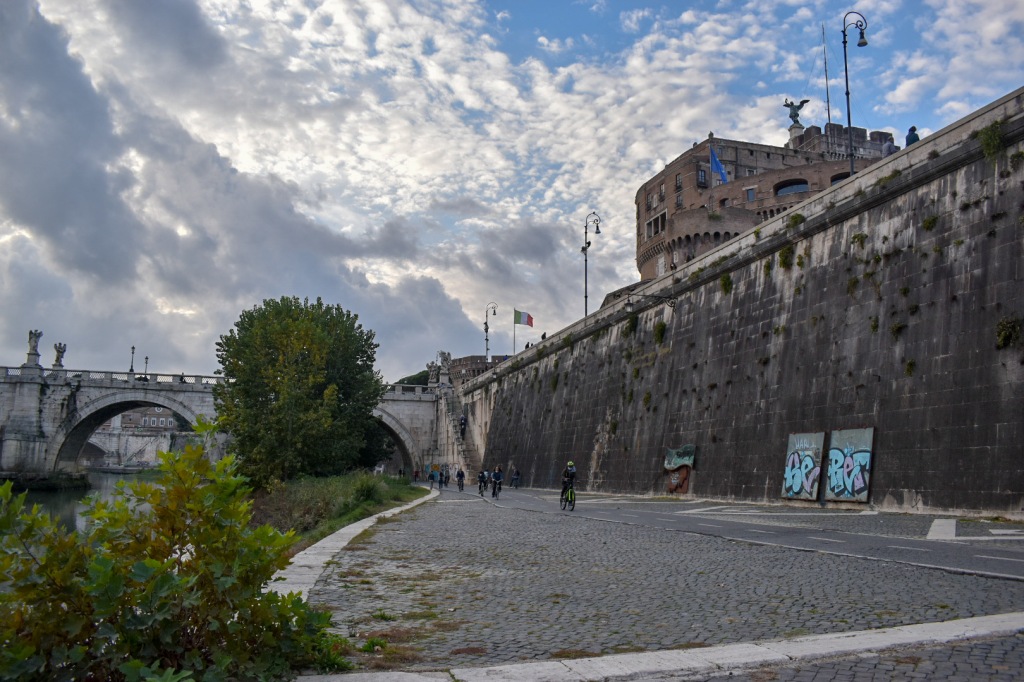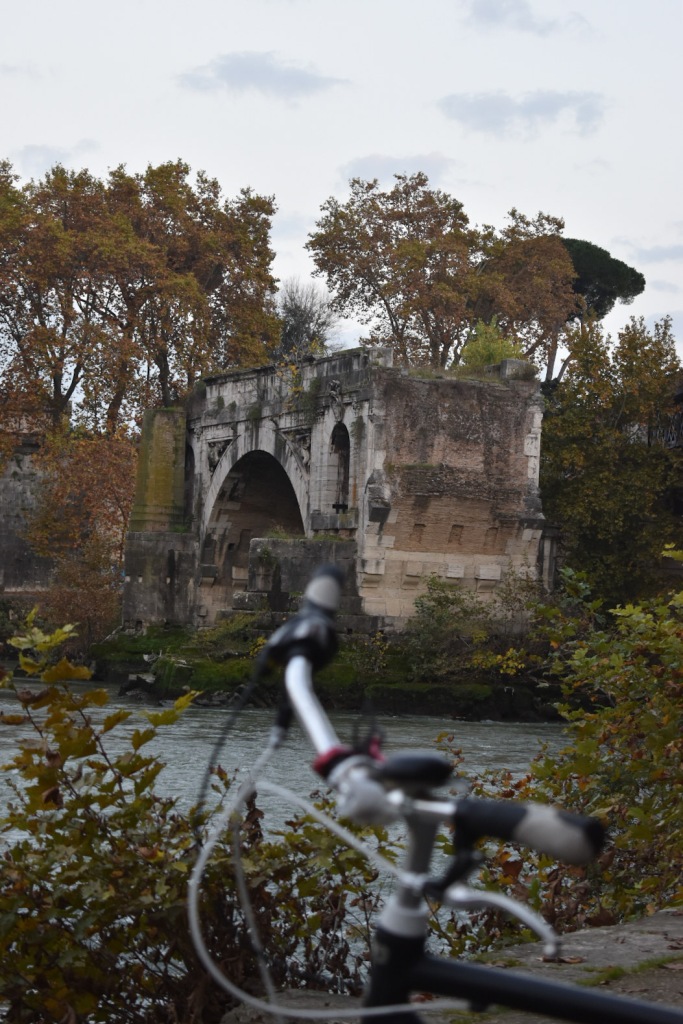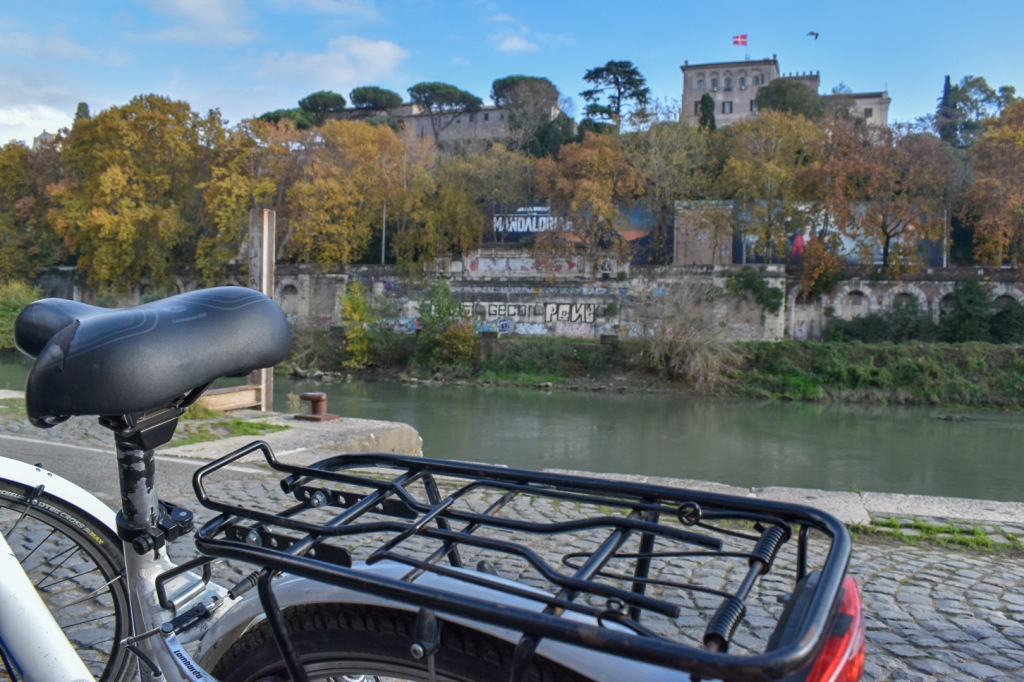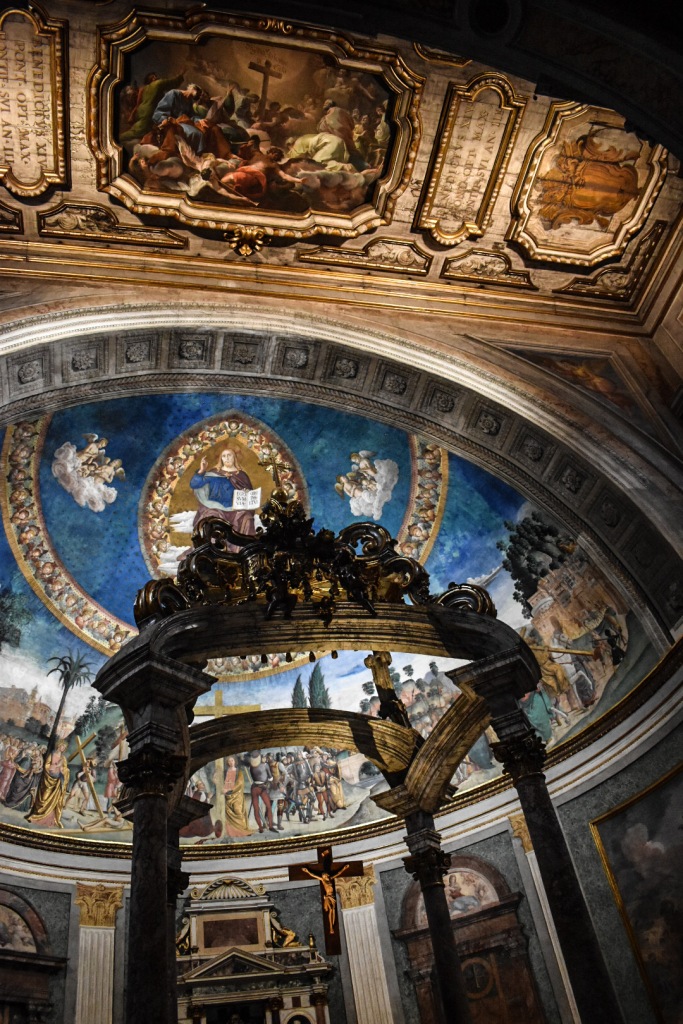There is something hearty and warming about autumn in Rome. Maybe it is the spectrum of toasty hues that adorn the cobbled footpaths: bright orange, carrot and nutty browns. Despite the unfolding choas of this world, it is easy to be transported by the dull glow of the streets.
Last weekend, I wanted to focus on what wonders were left to explore in this city. I booked another full-immersion langauge tour of a chuch for Saturday and a historical bike ride along the Tevere river with my housemate on Sunday. Fortunately, I still relish in the way Rome is so rich in architecture and history without even venturing inside a museum or gallery. You just need to tilt your head upwards to admire the inifite layers around you.
It is always an interesting experience being the token straniera or foreigner in a local tour group. It is fantastic for learning the language as well as the culture. I feel like our wonderfully informed and zainy guide Marco always sought out eye contact to make sure I understood. You would think that touring and learning about bridges would be somewhat drab. What history does a bridge like “Ponte Sisto” have over the Colosseo, for instance? (The one in the photo above?). Bridges connect two sides. In this case, a literal bridge connects the two banks of the Tevere. Commissioned by Pop Sixtus IV in the late 15th Century, legend has it that it was built from blocks from the Coliseum. It also has an ornate circular opening in the centre to allow water to flow more during flooding.
In this beautiful area, we discovered that famed murderess or “professional poisoner”, Giulia Tofana, had resided here during the 17th Century. Known as the “husband killer”, Italian women paid her to poison their husbands who has been abusive! In her trial, she confessed to being responsible for the deaths of over 600 men! I do not know how I feel about this! Thoughts?
The older bridge that I “ticked off the list” is Ponte Emilio or Ponte Rotto – literally the broken bridge. It is the oldest stone bridge in the city and dates back to the Roman Empire. I mean, there is nothing with being a cliched tourist and adding a lock to Milvio Bridge, but there was something deeply satisfying about discovering a little-known piece of Roman history.

Il Tevere 
Castel Sant’Angelo

Near Circo Massimo 
Broken Bridge 
Il Tevere 
Basilica di Santa Croce in Gerusalemme 
Basilica di Santa Croce in Gerusalemme 

